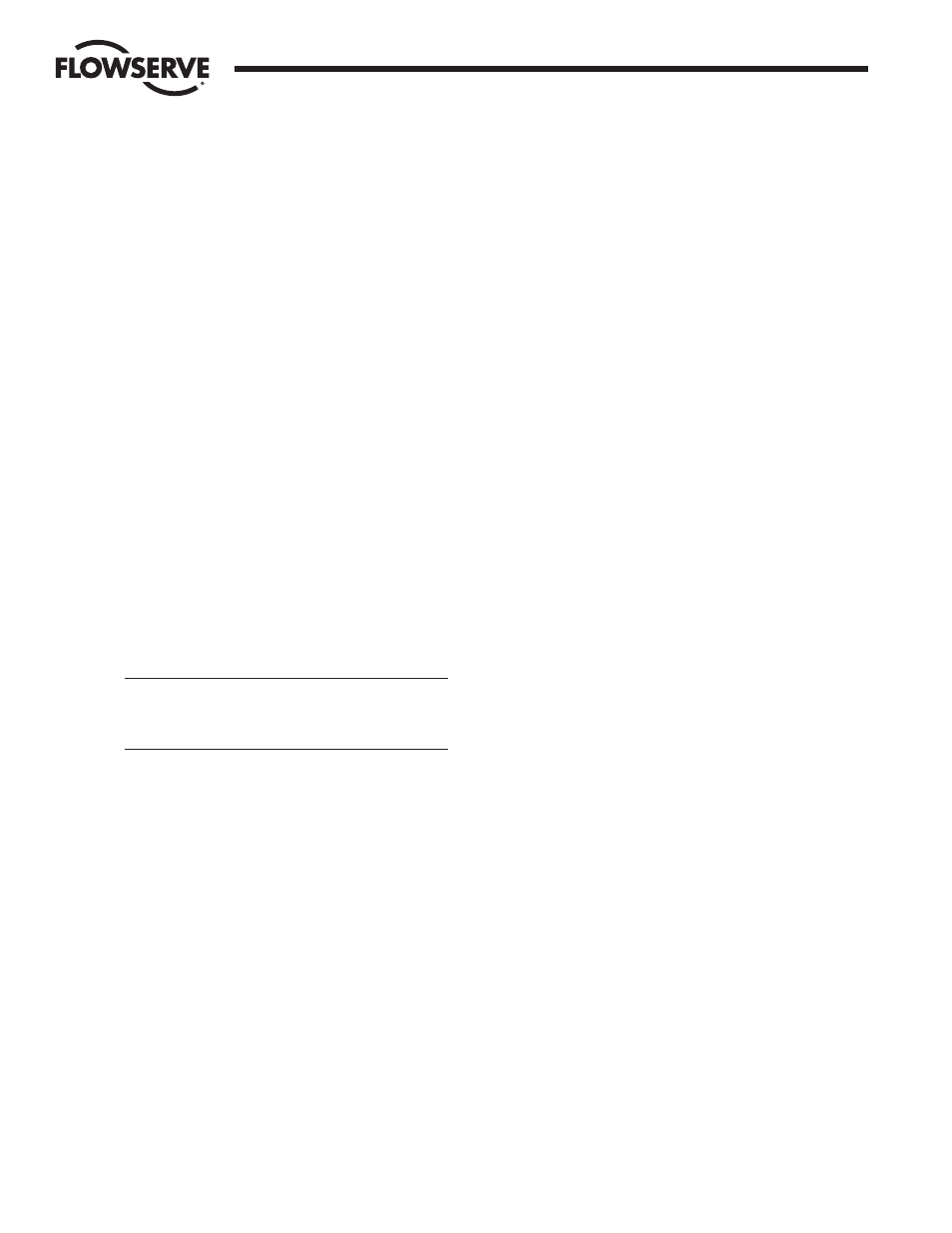Worcester controls – Flowserve 51 Series User Manual
Page 4

4
12230-N
4) Insert far seat and seat back seal (if any) in body. Make
sure seat rests firmly on back surface of recess. For
valves with “A” or “G” seats, the seat should appear to sit
flat into the back of the cavity indicating that the seat back
seal is properly located on the seat. If the seat back seal
is not correctly positioned it could be damaged or cause
the valve to leak.
5) With valve in closed position (stop plate pointer and/or
stem groove going across the pipeline), insert ball into
body so that stem slot engages tang on stem.
NOTE: For diverter valves, install ball as follows:
V1 (90N Valves)
With handle and/or groove in stem in
line with body main axis, viewed from end plug side
(normally upstream) one ball port is to the right, one is
down, and the other is on opposite end of valve.
V2 (180N Valves) Using same convention as V1, one ball
port is down and the other is on opposite end of valve.
Valves with a pressure relief hole in the ball (V3 option
and chlorine valves) must be reassembled and installed
with the hole upstream (end plug side), when valve is
closed, to ensure that cavity relief is upstream. Any valve
with this option will have an arrow on the body pointing
downstream. This arrow is stamped on the body or on a
metal tag welded to the body.
6) Install and make sure body seal rests squarely on seal
surface of body.
CAUTION: If the body seal is installed on the end plug,
it will be damaged. Insert seat and seat seal (if any) in
recess of end plug, and slide the end plug into the body
as far as it will go.
7) Secure end plug in place by threading in the end plug
retaining screws and tightening each one firmly. Proper
installation will allow no more than .010 protrusion of the
end plug beyond the valve body.
8) Replace handle assembly (wrench block and extension)
and tighten hex head screw (manual valves only).
9) Upon reinstallation of the valve in the line, retighten the
end plug retaining screws after the flange bolts are fully
torqued.
After the valve is assembled, it should be cycled a few
times to ensure that the valve operates smoothly with no
chattering of the ball. The normal operation is an initial
high torque to “break” from the closed position to a
smooth running lower torque mid-cycle, to a high torque
at the end of the 90N cycle or open position. The torque
is similar when closing.
3. When ordering parts, please provide the part name and the
following information as found on the valve nameplate:
a. Valve Size and Style and Revision Number.
Example: 3” - 466 T 150 - R8 Stem
6” - AF5146 RT 150 - R2 Stem
3” - CL514C7 RT 150 Stem
b. Valve Size, Style and 5 Character Code (known as a “P”
Number, “T” Number, “C” Number, or similar number), the
designation for a non-standard product. Example: 6” 5246 T
300 P2577 Ball
c. Porting (if a diverter valve) must also be specified when
ordering these parts. Example: 3” D5166 T 150 V1 R5 Ball
The terminology shown in the exploded view parts listing on
the following page(s) is standard.
Flow Control Division
Worcester Controls
- 52 Series McCANNA General Purpose Threaded MARPAC General Purpose Threaded Cartridge Seals 582 Mixerpac 2561 Mixerpac 2562 Mixerpac 579 Mixerpac 2563 Mixerpac 2564 Mixerpac 591 Mixerpac 581 Mixerpac 587 Mixerpac ML-200 Mixerpac 2577 Mixerpac 2554 Mixerpac 588 Mixerpac 585 Mixerpac Seal Gard Circpac MD Nordstrom Dynamic Balance Plug Valve and Double DB Plug Valve Serck Audco Super-H Plug Valve Serck Audco Twin Isolation Plug Valve Serck Audco Double Isolation Plug Valve Serck Audco Standard Type Plug Valves
